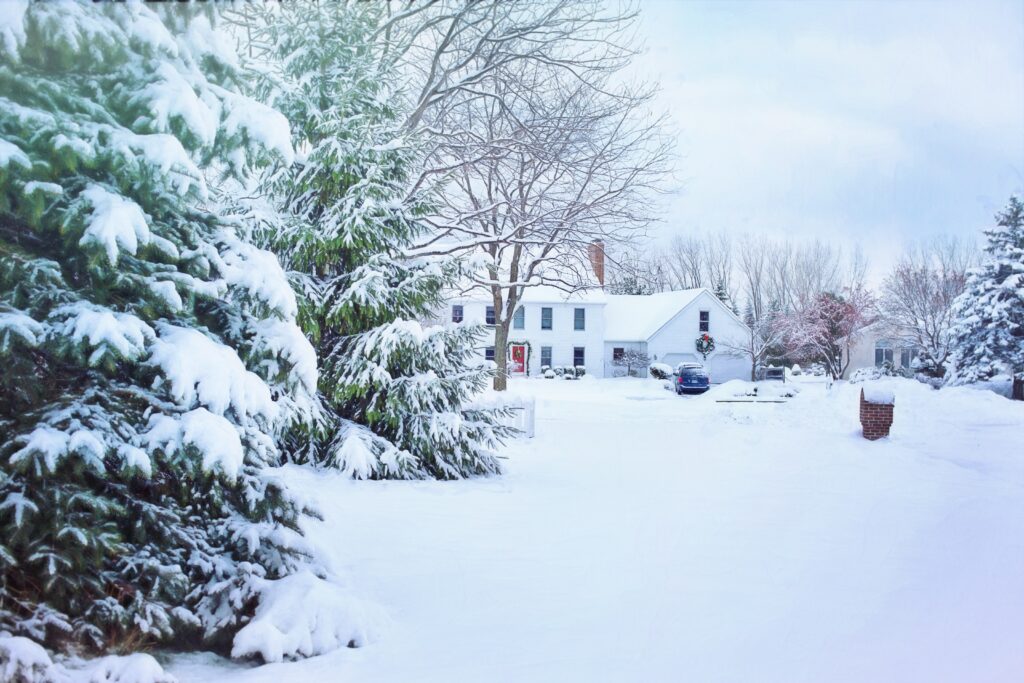
The winter months can be a slow time in real estate. Once the cold of winter settles in, we typically see fewer showings, fewer new listings, and fewer transactions altogether. Perhaps the shorter, darker days play a role, or maybe it’s the hustle and bustle of the holiday season that can lead buyers and sellers to wait until springtime to re-focus on their real estate needs. For many though, buying a home in the winter may be necessary! We’ve gathered some critical tips and things to keep in mind to help you navigate buying property in the winter.
The most significant limitations to buying a home in the winter have to do with the weather: freezing temperatures, snow and ice. A typical contract of purchase and sale of a home includes a home inspection condition, and the winter weather can make some elements of the home inspection very difficult, if not impossible to conduct.
Some areas that can be challenging to inspect due to winter weather:
- Roof, gutters and chimney: visual assessment can be very difficult. Wear and tear or general condition will not be visible under snow. Access to roof is limited or impossible. HOT TIP: ask Seller for photos of the roof from another season.
- Overall drainage and grading of the property is difficult to evaluate with piled snow and snowbanks obscuring topography.
- Driveway condition difficult to assess due to snow/ice.
- Foundations: older homes will actually allow heat to escape and melt away the snow adjacent to the house, which allows a visual inspection of the foundation to occur. Newer builds are more efficient in keeping heat in the home, and snow/ice remain an obstruction to visual inspection unless shovelled away. Onus on the buyer to ensure further, complete evaluation.
- Municipal water shutoff location: hard to find under snow, frozen ground.
- Condition of landscaping and garden areas difficult to assess.
- Irrigation: cannot test if frozen, and at risk of damage if not winterized properly.
- Pools are a perk in the summer, but can be very impossible to inspect in the winter. Buyers may get a deal on the value of the pool in the winter, but take on higher risk without being able to inspect pool curbing, coping, lining, etc.
- AC is typically not running during the winter. Cannot assess functionality.
- If the home is vacant, frozen pipes are a risk.
- Rural properties: septic difficult to locate under snow.
- Buyers don’t spend as much time outside inspecting the property details: fencing, detached structures, landscaping often get less attention from buyers during a showing.
Despite these challenges, there remain some advantages to buying a home in the winter:
- Easy to evaluate the heating components of the home, as well as heat loss at the roof.
- Easy to detect inefficient windows by sensing temperature and looking for condensation.
- Motivated buyers and sellers.
- Better access to lawyers, movers and realtors, as it is typically a slow time.
Key takeaways:
Buying property in the winter has distinct limitations, but also presents some opportunities to assess key features like heating and efficiency of a home. Make sure details and features that are important to you are investigated and assessed to the best of your (and your home inspector’s) ability. Consider every season when purchasing property, and dress warmly (with proper footwear!) when attending a property of interest in the winter so that you don’t rush examining exterior details. Make sure the assumptions you make about the home are as informed as possible to avoid unwelcome surprises in the warmer seasons.
Listen to this episode of the Kamloops Real Estate Insider Podcast for more details and context! Reach out if you have any questions about buying or selling a home in the winter.

